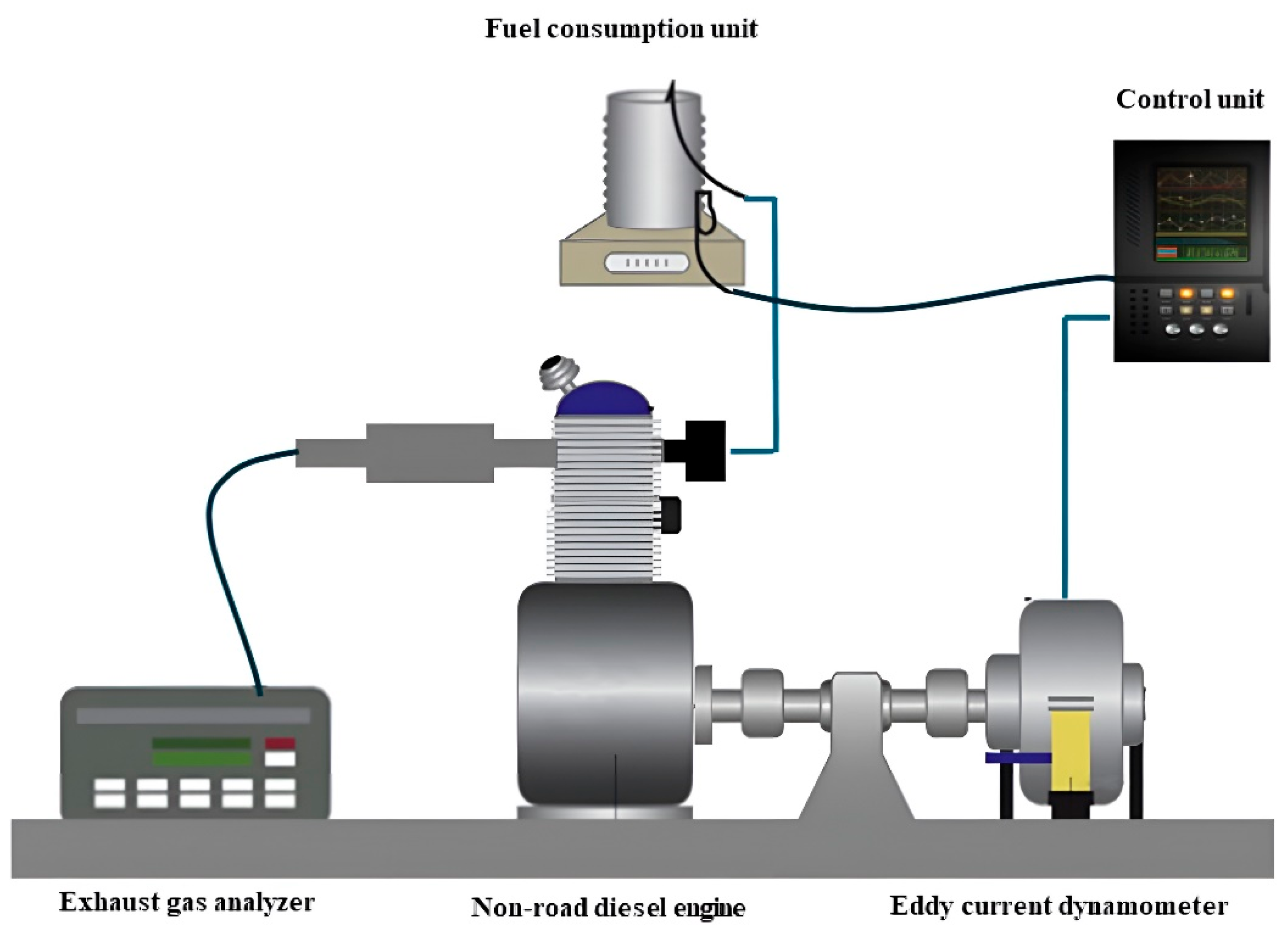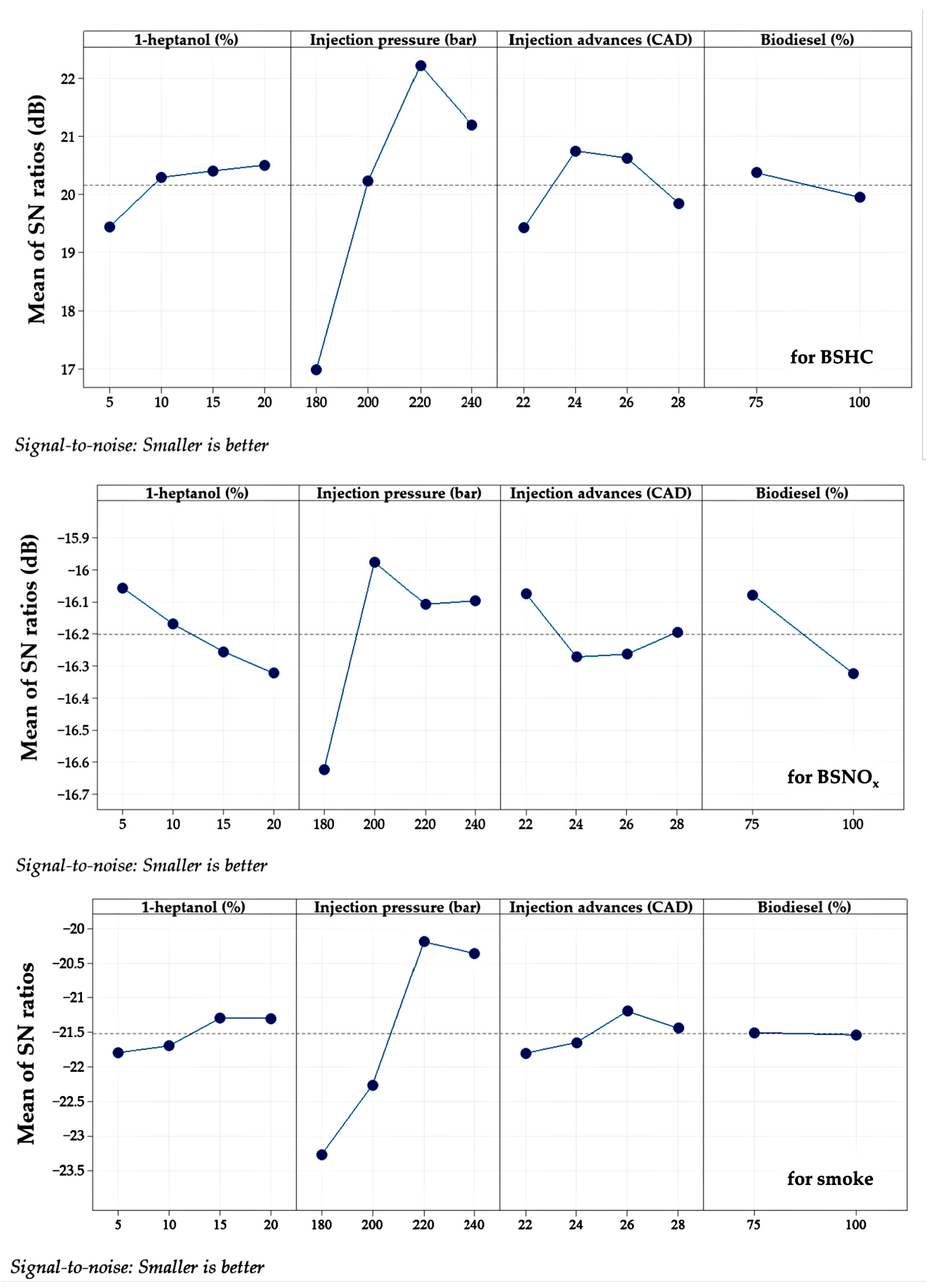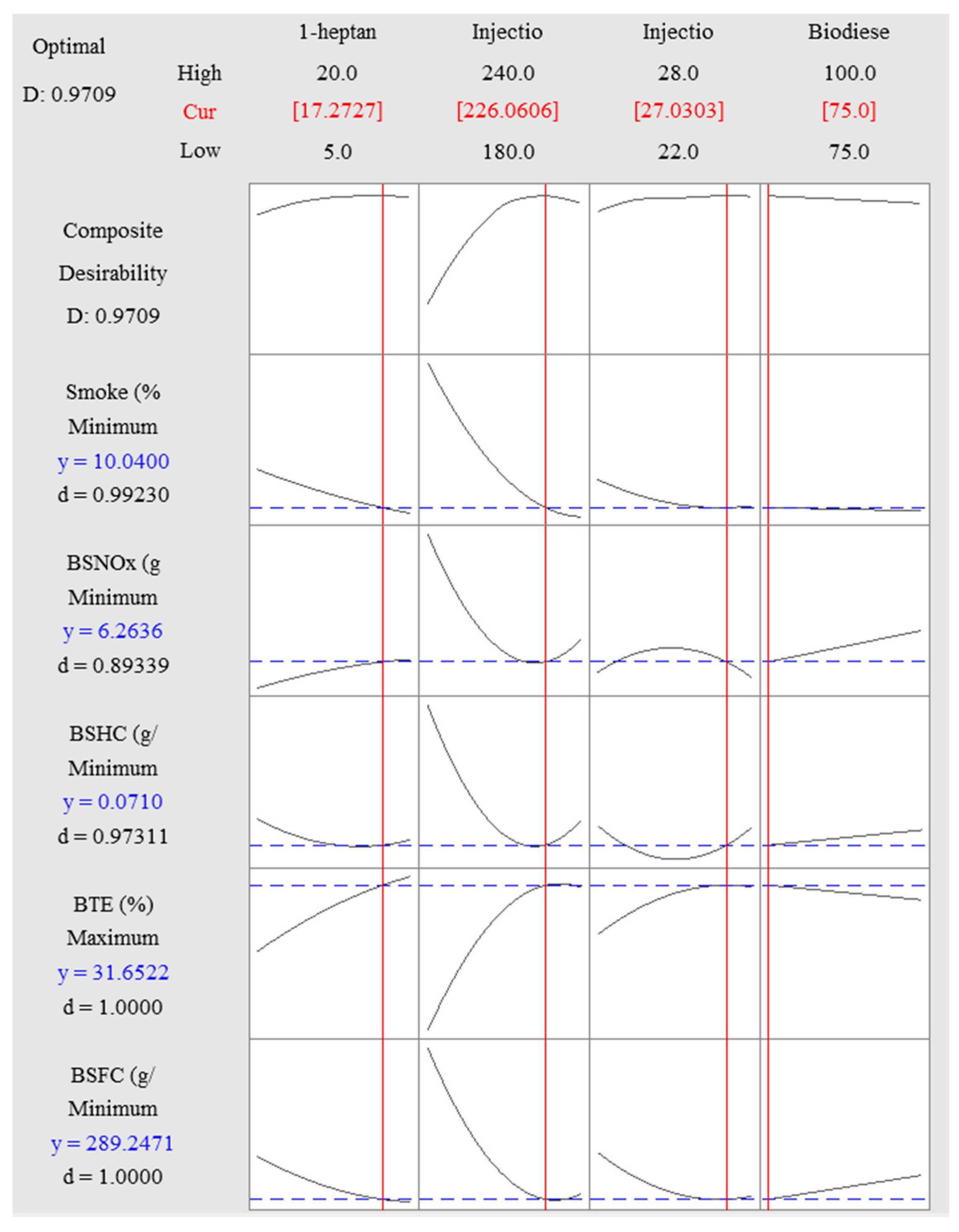As the urgency of environmental sustainability increases globally, researching alternative fuels for diesel engines has become crucial [
3]. Biodiesel, a green and environmentally friendly oxygenated fuel, can effectively reduce the CO, NO
x and PM emissions of diesel engines. Moreover, it can reduce the increasing automobile emissions pollution trend as soon as possible [
4]. Biodiesel is an alternative diesel engine fuel that contains oxygen, and is non-toxic, with high cetane, lubricating, biodegradable and renewable factors [
5]. Raw materials used in biodiesel production can generally be divided into three generations. The first generation includes traditional vegetable oils and animal fats such as soybean, sunflower, palm, canola and animal oils. Second-generation raw materials are oil and oily substances obtained from waste and residues. These are raw materials such as restaurant waste oils, animal waste and agricultural waste. Third-generation biodiesel feedstocks generally contain oils and oily substances obtained from microorganisms such as algae. Such raw materials can reduce the need for agricultural land and can also be used in wastewater treatment [
6]. These generations differ according to the sources, sustainability and environmental impact of the raw materials. The selection of raw materials for biodiesel production is important to minimize environmental impacts and observe sustainability principles. For this reason, the use of biodiesel obtained from waste frying oil was preferred in this study.
If biodiesel is used purely in engines, some exhaust emission values do not comply with EURO standards. At the same time, it may cause a loss of performance when used in naturally aspirated engines such as non-road engines. For this reason, alcohol is added as a blended fuel to minimize these negative effects of biodiesel [
7]. The effect of biodiesel/alcohol blend on engine performance and emissions has been investigated for a long time. The most used types of alcohol are ethanol, methanol and iso-butanol [
8,
9,
10,
11]. Biodiesel and alcohol are obtained from renewable agricultural raw material sources. The physical–chemical properties of alcohols used as blended fuels are an important factor affecting performance and emissions [
12]. Therefore, the properties of alcohol are important. Recently, researchers have focused on using higher alcohols instead of lower-chain alcohols such as ethanol and methanol. Long-chain alcohols with high molecular weight and more than three carbon atoms were defined as higher alcohols. For example, butanol (C
4H
9OH), pentanol (C
5H
11OH), hexanol (C
6H
13OH), heptanol (C
7H
15OH), octanol (C
8H
17OH), decanol (C
10H
21OH) and phytol (C
20H
39OH) are higher alcohols. Some properties, such as cetane number and the calorific values of higher alcohols, are better than those of lower alcohols. For this reason, they are preferred as a mixture of fuel [
13,
14]. Among the higher alcohols, propanol, butanol, pentanol, hexanol, heptanol and octanol are the most popular alcohols that can be blended with diesel fuel without any mixing problems [
15,
16]. Due to these properties, the use of heptanol among higher alcohols was preferred for the experimental study. There are some studies in the literature investigating the use of heptanol/biodiesel mixtures. In one such study, biodiesel obtained from algae was blended with commercially available diesel fuel and used as fuel in a diesel engine. In the tests carried out by adding heptanol to the algae biodiesel and diesel mixture to improve the ignition quality of the mixture, the performance and exhaust emission changes in the engine were examined. At full load, a maximum brake thermal efficiency (BTE) of 34.96% was achieved with a mixture fuel consisting of 10% heptanol, 20% biodiesel and 70% diesel. A general improvement was observed in emissions, except for smoke levels, and it was determined that the largest decrease was in NO
x emissions at 14.7% [
17]. Doğan et al. analyzed the energy, exergy, exergoeconomics, environmental economics and sustainability of 1-heptanol/biodiesel mixtures (Hp0, Hp5, Hp10 and Hp20) blended at different rates in a compression ignition engine, depending on their performance and emission values. It was found that increasing the heptanol ratio in the mixture increased brake-specific fuel consumption (BSFC), CO, NO
x and HC and decreased CO
2. Energy and exergy efficiency resulted close to diesel. Additionally, exergy destruction was higher compared to diesel [
18]. In another study using different ratios of heptanol/biodiesel mixtures, the effect of injection pressure on the engine was investigated. According to the results, it was seen that a mixture of 40% diesel + 40% biodiesel + 20% heptanol at high injection pressure significantly reduced CO and smoke emissions. The lowest value of NO
x emission was reached in the mixture fuel with a 40% heptanol addition. It was found that, at this mixture ratio, BSFC reached the lowest value, while thermal efficiency reached the maximum value [
19]. In a study investigating the effect of ternary blends containing higher alcohols 1-heptanol and n-octanol in hybrid biodiesel on a compression ignition engine, experiments were carried out at different loads and constant engine speeds. Octanol and 1-heptanol were added into biodiesel separately at rates of 10% and 20%. 1-heptanol reduced BSFC compared to octanol. In general, BSFC increased as the mixing ratio increased. Thermal efficiency reached its maximum in fuel with a 10% 1-heptanol addition. It has been determined that the addition of 1-heptanol and n-octanol causes an increase in CO
2 and NO
x emissions while reducing CO and HC emissions compared to diesel fuel [
20]. The effect of 10, 20 and 40% n-heptanol in biodiesel was examined by EL-Seesy et al. Due to the high calorific value and latent heat of evaporation of n-heptanol, it increased the combustion pressure and heat release rate compared to pure biodiesel. Additionally, the addition of 1-heptanol to biodiesel fuel also extended the ignition delay time. Smoke and NO
x levels are reduced compared to pure biodiesel [
21]. In another study on the blending of different alcohols with diesel, n-heptanol was also used in the mixture at the 5% and 10% levels. In the study, it was determined that high alcohol-blended fuels had a negative effect on combustion performance compared to pure diesel [
16]. Nour et al. obtained the test fuels by mixing n-butanol, n-heptanol and n-octanol separately with 10% each into B10 fuel, which was created by adding 10% biodiesel by volume to diesel. In experiments where the effect of these test fuels on a diesel engine was determined, it was reported that an improvement in exhaust emissions was achieved with n-heptanol fuel. With n-heptanol added to blend fuel, smoke opacity, NO
x, CO and CO
2 emissions decreased by 38%, 11%, 35% and 14%, respectively, compared to diesel. It was determined that BSFC and thermal efficiency are close to diesel in this fuel type [
22]. The effect of mixing pure biodiesel with 10, 20, 30 and 40% n-heptanol by volume on the combustion and emission characteristics in a common rail diesel engine was investigated. According to the combustion and emission results, it was suggested that the optimum mixture ratio for n-heptanol should be 20% [
23]. In a study where higher alcohols such as butanol, octanol and heptanol were blended with diesel, the changes in engine performance, combustion and exhaust emissions were examined. It has been observed that the 20% heptanol/diesel mixture increases the heat released per cycle compared to other fuel types. Additionally, the highest combustion efficiency was achieved. At the same time, the lowest smoke opacity was detected [
24]. McCormick et al. studied the effect of adding 1-heptanol to biodiesel and found a 3% reduction in NO
x emissions with heptanol added to biodiesel [
25].
When the literature is examined, it is seen that studies investigating the changes in performance and emissions for non-road diesel engines using a heptanol/biodiesel mixture are limited. Moreover, it is determined that there are not many studies on optimizing the use of biodiesel/heptanol at different injection pressures and advances in terms of performance and emissions. In this context, the optimization of operating conditions for a non-road diesel engine fueled with different ratios of heptanol/biodiesel at different injection pressures and advances constitutes the innovation side of this article. This innovative approach ensures that the most efficient operating parameters in terms of performance and emissions are achieved when using heptanol/biodiesel blends, from agricultural machinery to commercial vehicles and even individual machines. In conclusion, this article supports the principle of reducing environmental impact and sustainability by ensuring more effective use of biodiesels obtained from waste frying oil. Optimizing the heptanol/biodiesel blend has the potential to reduce the carbon footprint by reducing the use of fossil fuels. This can contribute to the protection of ecosystems and the fight against climate change by reducing the environmental impact in the long term.











